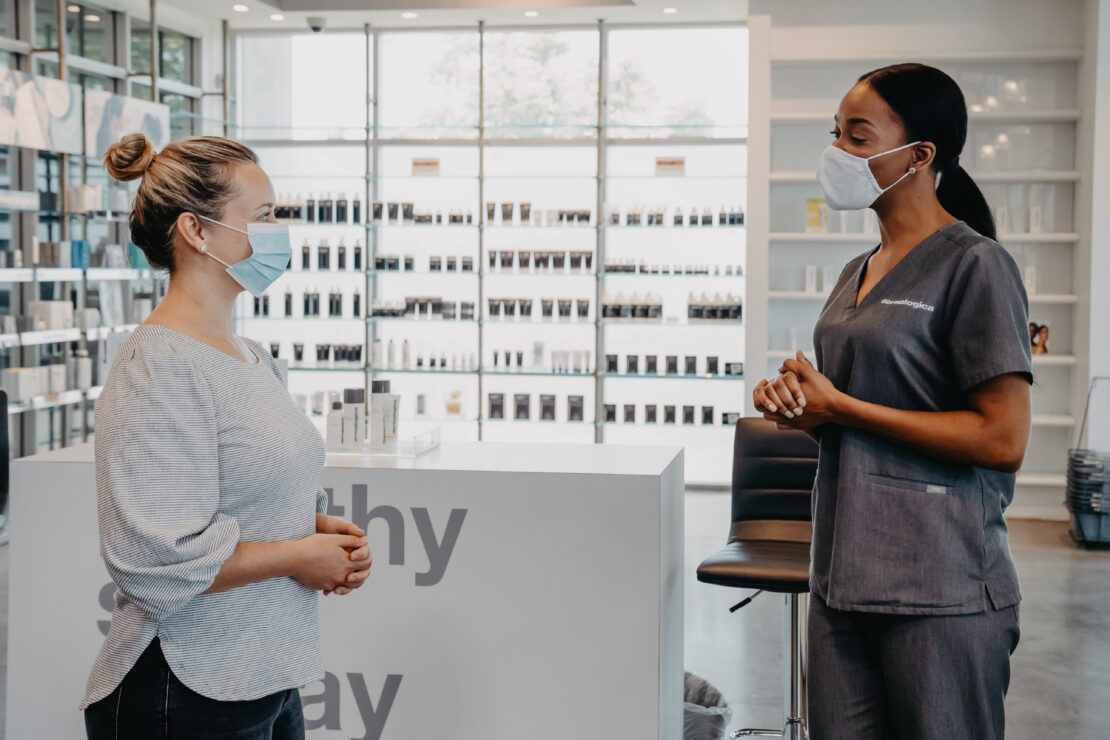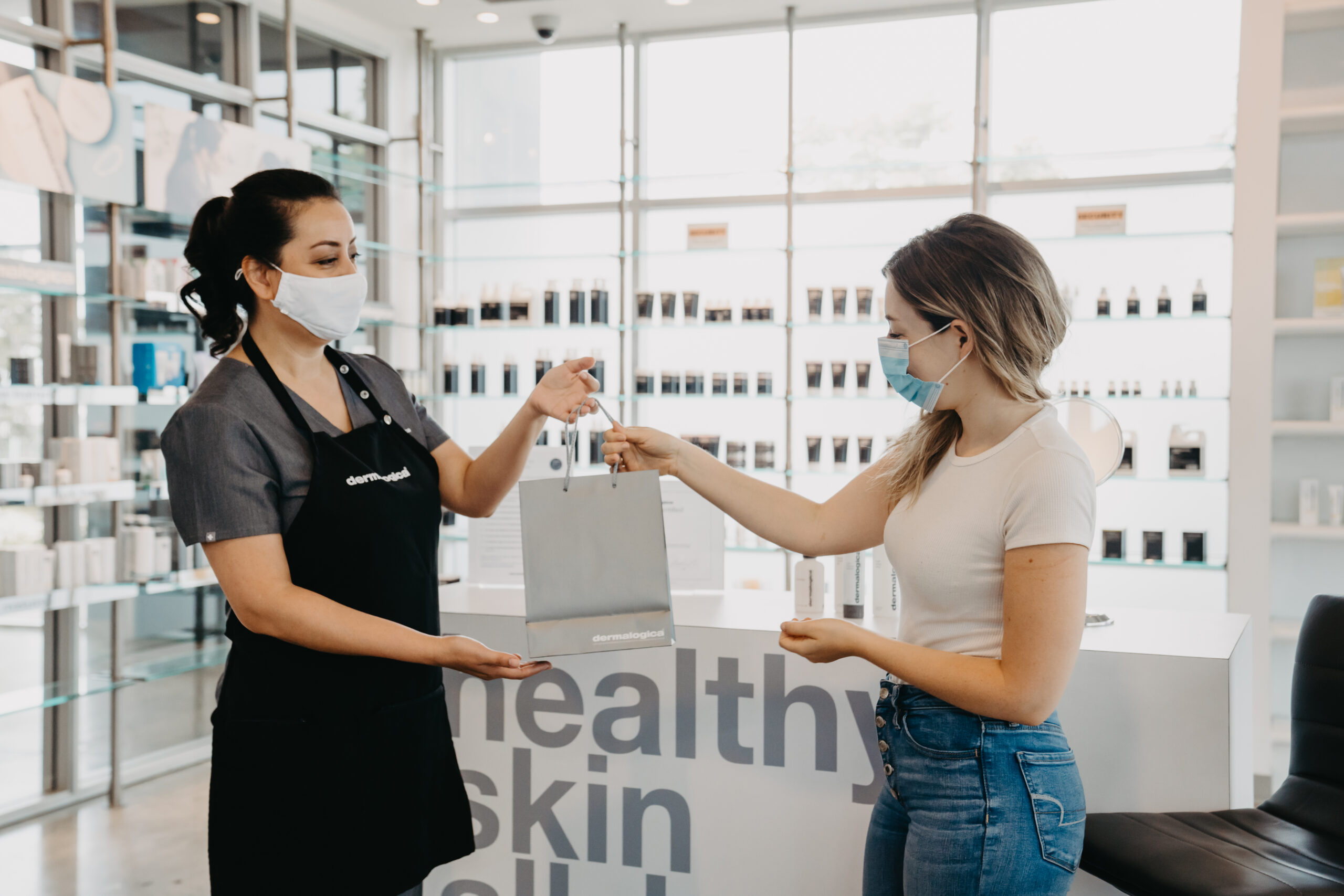Amazing Grace: How Spa Etiquette Can Build Your Bottom Line

“Grace” and “etiquette” may sound like old-fashioned words, but we need them today more than ever. Etiquette in the modern sense is not about selecting the proper fork for the salad at a formal banquet. It is about graciousness, including finding grace in difficult moments. Every service industry, especially spa and salon businesses, flourishes when we use our energies in a gracious way.
Etiquette begins with simple courtesy and good manners: making friendly eye contact, offering a warm (but not too chummy) greeting, listening attentively, and giving the client your undivided attention. It continues by keeping the client comfortable psychologically, emotionally, and physically. This is paramount for the entire team. Another key aspect of etiquette is anticipating any situation which may cause disruption in the overall brand experience and nipping these potential issues in the bud. Finally, and perhaps most importantly, etiquette really is about compassion. Being a truly gracious and graceful person requires constant imagination, more so than a simple a rulebook about how to speak and act. Only when we can imagine how another person feels, try to step into their skin, can we feel their pain, their joy, their anxiety, their humanity. The act of constant imagination allows us to empathize and is the basis of informed and effective service which builds loyalty to the brand and cements repeat business.
A rose is a rose is a rose. Likewise, the brand experience you create must be consistent across the board and all team members must be held to a consistent standard. Attitude is the area where inconsistency is immediately felt; it is not okay for a therapist to be snippy or dismissive, even if she is a brilliant technician in terms of her petrissage. Consistency is key and every time a client visits your spa, he or she should receive the same service and care from every single team member. As much as we criticize McDonald’s, the golden arches are a global force for a reason. From Cincinnati to Singapore, the burgers, fries and shakes are always identical (like it or not). To make this happen, every team member must share the brand vision in communicating to customers.
The other side of etiquette is one that makes managers and owners cringe – how to deal with problem customers. We all have them. Whether it is the client who is always late, the shopper with chronic buyer’s remorse who always returns product, or the client who frequently cancels and causes a complete rebooking scramble, there will always be problems to solve. Since even the most unpleasant clients deserve to be handled with skill and warmth, the challenge begins. This is where even the most good-natured therapists feel their good graces wearing a bit thin. So it is imperative that leaders train their team members on policies and ways of handling an array of situations.
Here are some basic protocols to build into your team training. Verbalizing clearly is important and leading by example is crucial. Set the bar high when welcoming new customers. The first time at a new spa can be an intimidating experience for clients and they can often feel nervous. Since repeat business is the bedrock of any salon or spa, remember to give returning clients your absolute best, too.
Warm Greetings in the Store and on the Phone
Seems simple enough, right? It is astonishing, however, how many businesses do not even offer a simple hello. It is important to introduce etiquette into your brand DNA by making sure every customer not only is greeted warmly, but assisted in every possible way. Additionally, remember that when someone calls your business on the telephone, that call is often their first point of contact with your brand. It is that critical first impression which is indeed lasting and can determine whether or not they give you their business. Answer the phone with a warm greeting and never end a call until you are sure all questions have been answered.
Often, at a busy spa, many lines may be ringing at once, or perhaps there is a line of customers in front of you. Although the situation requires that you assist in-person clients first, you also need to treat callers with respect and enthusiasm. No one wants to hear “Hold please,” followed by endless minutes of elevator music. With the caller, state your name, sincerely apologize for the delay, and ask if the person wishes to hold. If they do not wish to hold, after thanking them for their patience, repeat their number from the caller ID and offer to call back promptly. If someone else on the team can make the return call before you are able, definitely enlist that co-worker to call the client back.
Clear Explanations of Services and Policies
Less is never more when answering any client’s questions, no matter if it is in person or on the phone. Be fully present and always give the client 100 percent of your attention. This is not the time to multitask! It is extremely important to make sure all new clients are walked through the process of each service offered. They need to know what to expect, when to arrive, where to park, when to arrive, how long it will take, what the cancellation policies are, and so on. Whether they are on the phone or visiting in person, it is imperative to give them a perfectly clear picture of what to anticipate.
This will not only make them feel more comfortable, it will also prevent many common customer complaints. You will not have to hear, “No one told me I was supposed to arrive early to fill out a consultation card,” or “I did not know you did not have a parking lot.” Clients should always be asked to arrive 10 to 15 minutes early to allow time to park, fill out a consultation card, and ask any questions prior to treatment. It is also a great time for them to simply relax and enjoy a cup of tea or receive a tour of the spa before their service. If customers seem to have a lot of questions or seem nervous, recommend that they stop in for a tour of your facility before their treatment. When it comes to your cancellation policy, it is important to let the client know that you understand that things happen and that they may need to reschedule their appointment. With kindness, explain your policy and that if no notice is given (24 hours is recommended), they will be subject to a fee. It is important that the front desk team be careful to be extremely polite and warm when asking for this information, especially when asking for a credit card number. Let the client know that their personal information is protected and secure, the credit card is only for holding purposes, and that they are welcome to pay at the conclusion of their treatment in the way they wish. Remember to explain everything gently but thoroughly, as though the customer has never booked or experienced a professional service.
Set the Mood
The first team member that the client encounters sets the tone. The start of a service should always start with a friendly salutation. Again, this reflects consistency across the brand. And friendly does not mean slang or overly familiar. It is better to err slightly on the side of formality.
When approaching a couple of women (or men) shopping, “Hey guys” is never an appropriate greeting. Our global village means that many people from many different backgrounds now come to our door and few are as casual in their demeanor as Americans. Learn the client’s name and use it respectfully when addressing her or him.
Offer tea or water and pour it for the client into a non-disposable glass or cup. Every new client should fill out a detailed consultation card addressing skin concerns, allergies, medical history, and so on. This will help customize their treatment and make sure there are no contraindications regarding products that may be used during their treatment. The skin care professional then greets the client and asks if a restroom stop is needed before the treatment begins. The aesthetician then escorts the client to the restroom, waits for them, and leads them to the treatment room. The alternative is a client wandering the corridors, losing faith in your brand with every step.
Take Adequate Time to Explain What the Client is to Do When inside the Room
Entering the treatment room can be a very intimidating process. It can make clients nervous. Be warm and graceful. Use the client’s name, let him or her know how much clothing to remove, where to put their clothing, and where to put their belongings. You should step out of the room for literally three to four minutes and this is the only time the client is left alone until the service is complete and it is time for them to get dressed. After four minutes, tap gently on the door and rejoin your client. Bring the consultation card with you. Review the card and ask questions before initiating the hands-on treatment.
Ensure Comfort within the Treatment Room
Room temperature, music volume (versus complete silence), lighting, bed height, of heating pad placement, and level of manual pressure all need to be adjusted for the client’s comfort. Ask about each of these areas within the first few moments of the treatment. Another aspect of etiquette in the room is the level of chat. Some clients unload, either because they welcome the therapeutic relationship or they are nervous. Others become silent. Some fall asleep.
My advice is to keep talking to a minimum. Of course, the client is always welcome to ask questions but refrain from small-talk, even when the client is chatty. Check in occasionally by softly asking if they are comfortable. Before applying any product or device to the skin, briefly announce and explain before you do it, as in “Now, I am going to apply our purifying camphor mask and your skin will feel cool and fresh. Just let me know if it is too much.” The less you say, the more you emanate an aura of confidentiality.
Be There for Your Client
Stock the treatment room with everything you will need, from serums to spatulas, so that you do not have to go trotting off in mid-treatment. Clients are prone to fear abandonment – they are naked, vulnerable and in your care. Per our introductory comments about compassion, imagine yourself there and offer them a calming, consistent feeling of security and support by being well-stocked and well-prepared.
When the treatment is over, help them sit up, ask how they feel, and tell them exactly where you will be when they dress and come out. There is nothing worse than being left to find your way out of a spa, never seeing your technician again, and be handed a list of products that you have never heard of scribbled on a paper handed to you by a stranger at the front desk. That is a great way to ruin a client’s experience and lose retail sales revenue. Be there for the client at the front desk and smile as they approach. Prepare the recommendations and explain what the products do. If the client hesitates to make the purchase, gift him or her with samples of all recommended products and, of course, include samples with every purchase. Smile, thank them again, and send them on their way (ideally after booking the next visit).
Do Not Hard-sell… Ever
A key point in spa etiquette is to never make your client feel forced to purchase retail. We have all been in the situation where we enter a spa or salon for an advertised special and once the crew gets us on our backs in the chair, the up-sell begins. Do not do this.
Do offer a rebooking incentive, such as 10 percent off, if the client rebooks before leaving the spa. Do make recommendations about further treatment, but make it short and sweet. And do send the client home with new knowledge about their own skin, samples to try, and most of all the confidence that they made the right decision about their skin by choosing to entrust you and your team with its care.
Follow Up
After the treatment, politely ask all new clients if they have a preferred method of contact for future communications. Always send a thank you card – meaning an actual card with an envelope and a stamp – to new clients. Call clients after a major service such as a peel. The personal touch of a handwritten note can have a lasting impression in these digital days. A phone call to check on a client after a treatment is a great way to see how their skin is doing and creates an opportunity to invite them back.
Related articles
How Does Menopause Affect Your Skin?
Healing the Industry, the World and Ourselves
Controlling Aging Skin
stay in the know
Get special offers on the latest developments from Front.



